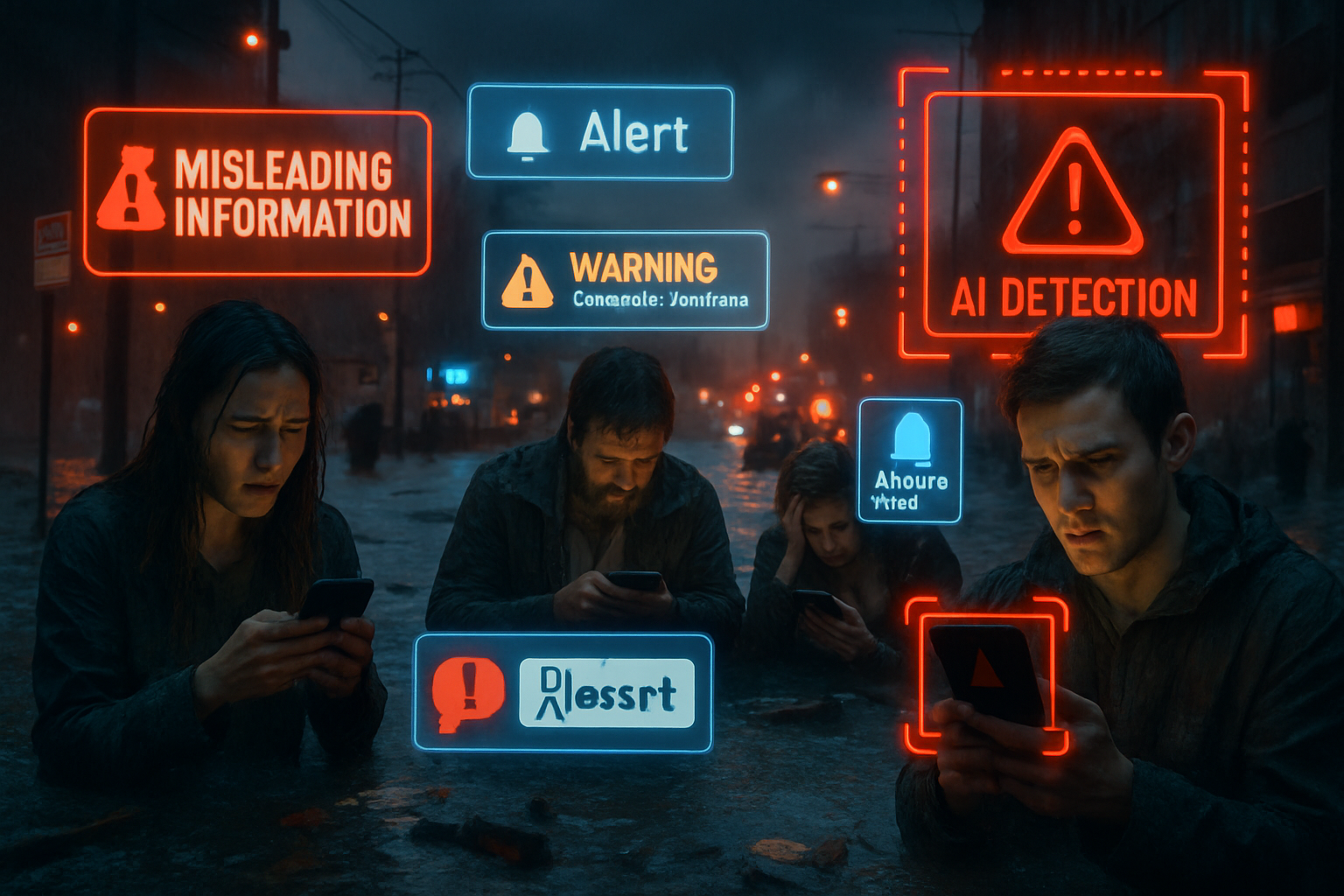
AI CERTs
2 months ago
AI Crisis Detection Under Fire: Lessons From Hurricane Melissa
Sirens wailed across Kingston as Hurricane Melissa lashed Jamaica late on 27 October. Emergency managers posted evacuation maps every hour. However, social feeds showed sharks swimming through a hotel lobby. The clip looked authentic, yet it was fully synthetic. AI crisis detection systems flagged the video, but only after millions had viewed it. This gap highlighted a growing threat for real-time disaster communication. Moreover, responders scrambled to correct rumors while still tracking storm surge data. Melissa thus became a textbook case for understanding deepfake chaos during extreme weather. Consequently, professionals now reassess verification workflows, platform policies, and public guidance. The following analysis unpacks lessons, tools, and future safeguards.
Storm Disinformation Surge Unfolds
Melissa intensified from Category 3 to Category 5 within 12 hours, according to NHC data. Meanwhile, AI-generated videos began trending less than 30 minutes after landfall. OpenAI’s Sora watermark appeared on several clips, yet reposters cropped it out. Therefore, citizens faced a confusing mix of real flood footage and fabricated chaos.

- Peak winds: 185 mph, NHC advisory 28 Oct.
- Deepfake posts flagged: 12,000 within 24 hours, Sensity report.
- Entrust data: one deepfake attack every five minutes during 2024.
- Local disaster management AI dashboards mirrored NHC feeds and community posts.
These numbers reveal both meteorological severity and information volatility. Consequently, stronger monitoring frameworks became essential.
Detection Tools Under Strain
Research teams deployed audio-visual detectors across X, TikTok, and Instagram. However, changing codecs and light filters reduced accuracy by 32%, ASVspoof tests show. Such drift demonstrates why AI misinformation control strategies require constant model updates. AI crisis detection metrics recorded precision drops during peak traffic.
Vendors like Truepic embedded C2PA provenance within original uploads. Nevertheless, metadata vanished once users downloaded and re-uploaded content. Therefore, the liar’s dividend persisted, allowing denial of authentic evidence. Policy labs examine synthetic media ethics to balance free speech and safety.
Critical Detection Gap Areas
- False negatives on novel diffusion models
- High false positives during heavy rain noise
- Limited multilingual audio spoof coverage
These gaps undermine confidence in automated alerting. Moreover, operational risks escalate when responders rely on unverified feeds.
Operational Risks For Responders
Jamaican shelters filled quickly after official warnings. However, false airport destruction clips triggered unnecessary rush toward inland roads. Traffic jams delayed medical convoys by almost an hour, local reports indicate. AI crisis detection delays therefore translated into tangible safety costs.
Disaster management AI teams recommend layered verification before issuing location-specific guidance. For example, OWASP GenAI suggests a dual-channel message signed with unique hashes. Furthermore, phone trees and community radio provide offline redundancy. Such hybrid protocols reduce panic and maintain trust. In contrast, platforms face their own governance dilemmas.
Platform Policy Pressure Mounts
Platforms promised watermark detection at scale after earlier hurricane hoaxes. Nevertheless, automated takedown queues lagged viral reposts by several hours. AI crisis detection dashboards inside trust-and-safety teams displayed backlog spikes of 200%.
Executives cite rapid model releases and cross-platform migration as compounding factors. Moreover, regulatory audits now request real-time transparency reports during declared disasters. AI misinformation control policies will likely become statutory in multiple jurisdictions. Effective AI crisis detection on platforms will require open APIs for academic auditing.
Emerging Platform Policy Levers
- Mandatory C2PA retention across uploads
- Expedited human review for crisis tags
- Fines for repeated provenance removal
These levers pressure platforms toward proactive governance. However, technology limits still constrain impact.
Provenance And Watermark Limits
OpenAI embeds visible and invisible marks in every Sora 2 clip. Subsequently, users can crop edges or re-encode conversions that strip metadata. Synthetic media ethics debates question reliance on purely technical signals.
UNESCO warns that watermark removal will keep evolving alongside generation models. Therefore, provenance must couple with audience education and rapid journalist verification. Furthermore, professionals can enhance their expertise with the AI+ Ethics™ certification. Robust AI crisis detection must flag cropped watermarks in near real time. Provenance alone cannot solve the liar’s dividend dilemma. Consequently, resilience planning gains urgency.
Toward Resilient Response Protocols
Disaster management AI playbooks recommend pre-approved visual assets posted at frequent intervals. Moreover, time-stamped QR codes help citizens verify authenticity quickly. AI crisis detection outputs can feed these dashboards once detectors meet accuracy thresholds.
Experts advise public drills that simulate synthetic media attacks. Additionally, security teams should map decision latency from rumor emergence to debunking. Such metrics support continuous improvement cycles. Regular red-team exercises also strengthen AI misinformation control resiliency. Training modules should embed synthetic media ethics scenarios for decision makers.
Recommended Crisis Action Checklist
- Publish verified content feeds with C2PA signatures.
- Create multilingual rumor counters updated hourly.
- Enroll staff in ongoing synthetic media ethics workshops.
- Test AI misinformation control engines quarterly.
These steps strengthen institutional readiness and public confidence. Next, leaders must consolidate lessons learned.
Key Takeaways And Action
Hurricane Melissa revealed how AI crisis detection still lags human creativity. Deepfake volume overwhelmed AI misinformation control frameworks across major networks. Disaster management AI teams now treat provenance, redundancy, and drills as core capabilities. Moreover, synthetic media ethics discussions push vendors to embed transparent guardrails and user education. Platforms, responders, and journalists share responsibility for rapid verification and clear messaging. Consequently, investing in staff who hold the AI+ Ethics™ credential builds cross-sector trust. Future storms will test AI crisis detection again, yet coordinated policy, tooling, and training can close gaps.



